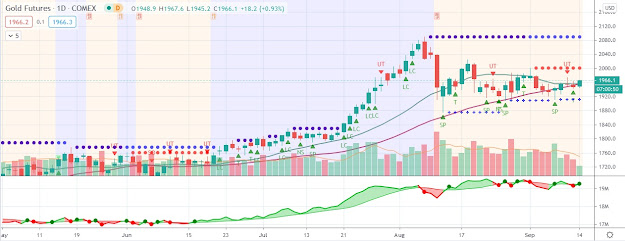Gold are expected to maintain their upward trends in the near-term

Gold are expected to maintain their upward trends in the near-term, with gold advancing toward $1,540 resistance. Support will come from easy monetary policy, a lack of serious spending cuts, and inflows of investment. In our 2011 outlook, we looked for a price range in gold of $1,250-$1,550 for the year, with a peak around mid-year.
After the disappointing spending cuts of the Congressional FY11 budget deal secured on Apr 11th, we noted that we were considering raising our forecast upper range based on a lack of spending-cutting credibility by both the President and House Republicans. We didn’t make an increase because we thought that the end of QE2 could still lead to incremental tightening and thus price pressure. However, yesterday’s indication from Fed Chairman Bernanke regarding the maintenance of accommodative monetary policy at least through Sep is more than we can
accept and still argue for a potential $1,550 peak. Therefore, we’re incrementally raising our upside objective to $1,650 and pushing back our time target for a peak from mid-year to around Sep.
A correction from $1,540 is still possible in the short-run, but we no longer view the $1,540-$1,550 range as the ultimate peak this year. There were two parts to yesterday’s FOMC events that were telling for Gold. First, the statement regarding steady policy communicated that the Fed would not undertake the potentially hawkish measures spelled out in Monday’s WSJ article including shrinking its balance sheet or paying interest on bank reserves held at the Fed. Gold prices were +$4.40 at that time while S&Ps traded +2.00. The lack of any mention of tightening foretold that the press conference later in the day would be dovish as well, and that’s what took place. Gold traded as high as +$27.20 at its afternoon peak, while S&Ps advanced 13.10 points at their best levels.
The press conference began with a downgrade in the 2011 GDP forecast to 3.1%-3.3% from 3.4%-3.9% seen in Jan and an upgrade in the core inflation forecast to 1.3%-1.6% from 1.0%-1.3% previously. That alone gave support to precious metals from the perspective that slow growth and high inflation were negative for the dollar. In the press conference, Fed Chairman Bernanke referred to inflation being transitory and said that high commodity prices were caused by strong demand in developing economies. He suggested that the balance sheet would remain at end-June levels, with a shrinking balance sheet signaling a tightening. He gave no timetable for the tightening. He did seem to argue against QE3, but the lack of mention of balance sheet shrinkage or paying interest on bank reserves as suggested by the WSJ enabled metals to take back the corrections made earlier this week. Mr. Bernanke suggested that Fed policies would be beneficial for the dollar, but the dollar index finished about 0.45 points lower yesterday.
We think that the FOMC statement as well as the press conference implied that accommodative policy would last for at least several months after the June 30th end of QE2. When combined with the unlikelihood that significant agreement will be made between Democrats and Republicans regarding which spending programs to cut later this summer, we now believe that the key factors boosting metals in recent years including low rates and a weaker dollar will remain in place.



Comments
Post a Comment